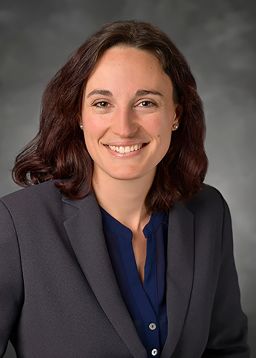Editor’s Note: Alister Martin is an emergency physician and founder of VotER, a collaboration between ideas42, Turbovote, and Massachusetts General Hospital to help the nation’s hospitals and health institutions build platforms that can register patients to vote while they wait. He serves on the faculty of Harvard Medical School in the Center for Social Justice. Halea Meese, MD MS is a family medicine resident in New Mexico and an advocate for health equity. The opinions expressed here are their own. Read more opinion articles at CNN.
One need not look any further than the primaries in states like Georgia and Wisconsin to see that Covid-19 has made voting a public health issue. In Georgia, absentee ballot delays meant that voters who’d planned to vote remotely had to risk infection by waiting for hours in crowded lines at polling stations. In Wisconsin, over 70 voters and election officials were diagnosed with the virus in the weeks after the state’s April primary.


While the new infections couldn’t conclusively be tied to the ballot sites, a study by economists at The University of Wisconsin and Ball State University, found a “statistically and economically significant association” between in-person voting and the spread of Covid-19 after the election. The economists estimated that about in-person voting was related to some 700 infections – about 7.7% of confirmed cases – and that on average a 10% difference in in-person voters per polling location between counties was associated with approximately a 17.7% increase in the positive test rate.
Nobody should have to choose between their vote and their health. That’s why voter registration organizations, election advocates, and activists are working to ensure that we do everything we can between now and November to make voting from home a viable option for every citizen in this country. The chorus calling for expansion of vote-at-home has, until now, lacked one crucial voice: health care providers.
No other group has felt the impacts of Covid-19 more acutely than health care providers in this country. From protective equipment shortages to the prospect of rationing care in resource-constrained settings, physicians, nurses, social workers, and other frontline providers have experienced the severity of this pandemic firsthand.
Historically, physicians have advocated for patients’ public health: encouraging adoption of seatbelts, helmets, and safer food labeling. An increasing number of physicians are now advocating for vote-at-home access for their patients as part of this public health responsibility. Physician civic engagement groups like Patient Voting, Med Out the Vote, VotER, and a wide array of healthcare-based partners and others have launched Civic Health Month to ensure that every person can participate in electoral politics this November in the safest, healthiest way possible.
We helped to build VotER, a nonpartisan, nonprofit health-care based voter registration organization. Its mission is to encourage voter participation among patients by having participating providers use the Healthy Democracy Kit. These free kits offer an optional and easy way for patients to start the process of requesting their mail-in ballots on their smart phones while they wait in healthcare settings like doctors’ offices and hospitals. The kits allow providers to wear their lanyard with the VotER prompt which asks “ready to vote?” and uses an ID badge backer with a text short code that providers can give to patients to help them register on their own phones or request an absentee ballot using the TurboVote platform.
This process can be completed in as little as two minutes and has the added bonus of encouraging people who register to vote with optional text reminders about the address of their polling place and the time the polls are open. In less than six weeks, over 10,000 health physicians, nurses, med students, and social workers have requested their free Healthy Democracy Kit and thousands have been shipped out already. Each provider using a kit could produce several newly registered voters or voters who initiate the process to get their mail-in ballot.
Our read of this enormous early traction is that physicians are waking up to the fact that we have to be in the business of helping our patients make their voices heard in a safe way during this election cycle given the risks of Covid-19.
Whether it’s a touchscreen, a pen, or a lever, voting requires touching communal surfaces that can spread the virus. And with long lines and crowded rooms at most polling locations, there are countless opportunities to spread the virus, even with strict social distancing in effect.
Too often, waiting in long lines adversely affects the communities already most affected by police brutality and the pandemic. Voters in predominantly Black and brown neighborhoods waited almost a third longer than those in whiter neighborhoods to cast their votes during the 2016 presidential election. In this day and age, such asymmetrical wait times translate to increased levels of exposure to the virus.
With doubts about the safety of voting in person, many voters, especially those most vulnerable to the disease, must decide between opting out of the democratic process or endangering their health.
It’s not only would-be voters who are at risk. Many poll workers are over 70, a group with a higher risk of mortality from Covid-19.
As we approach the November election, healthcare providers must join the chorus of advocates demanding what we, as frontline providers, already know: patients will be safer if they vote from home. And in order to provide local election officials with ample time to plan and ramp up vote-at-home infrastructure, the time for us to act is now.
For all of our patients, we prescribe vote at home.


